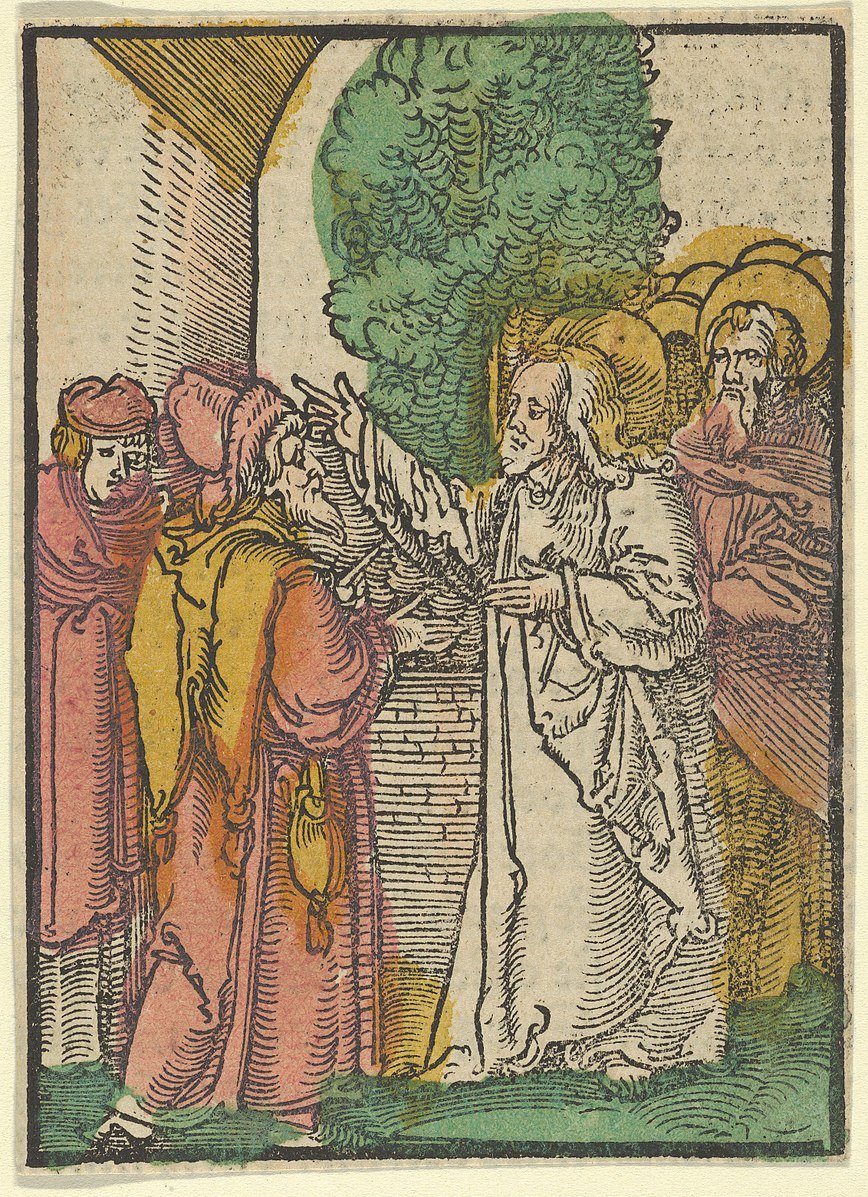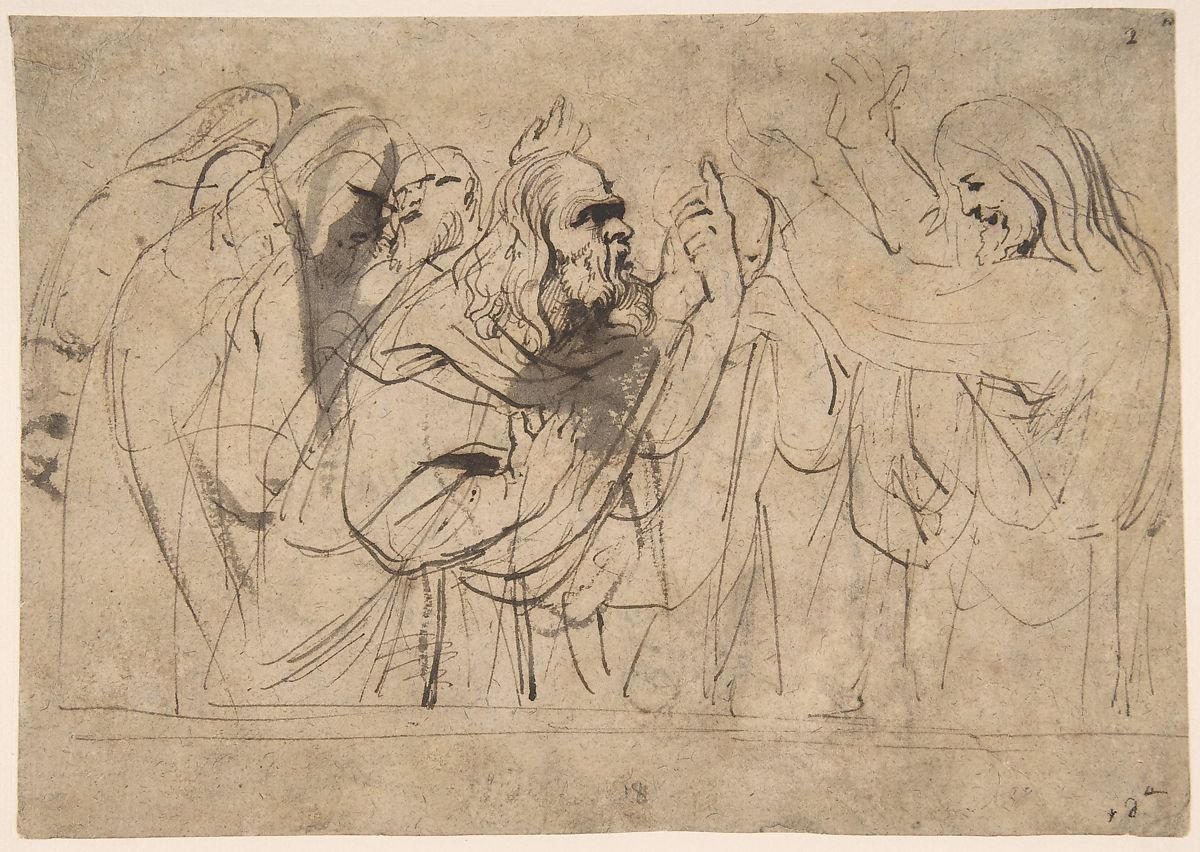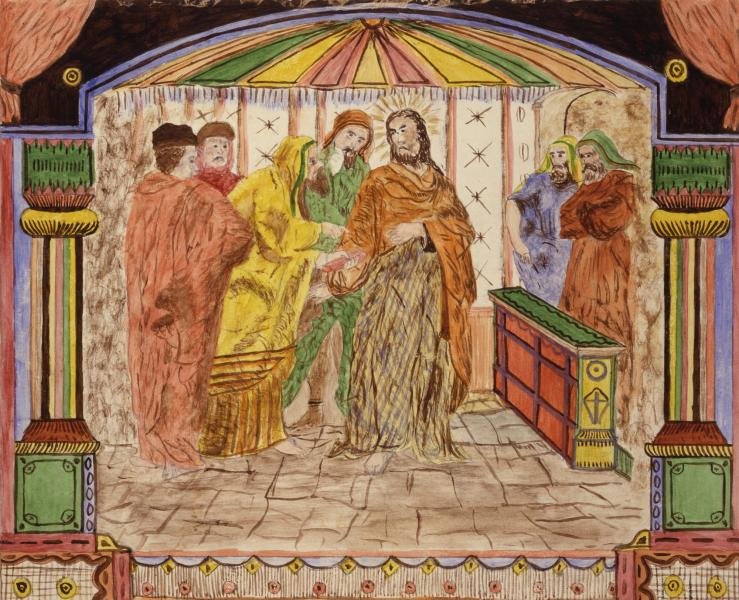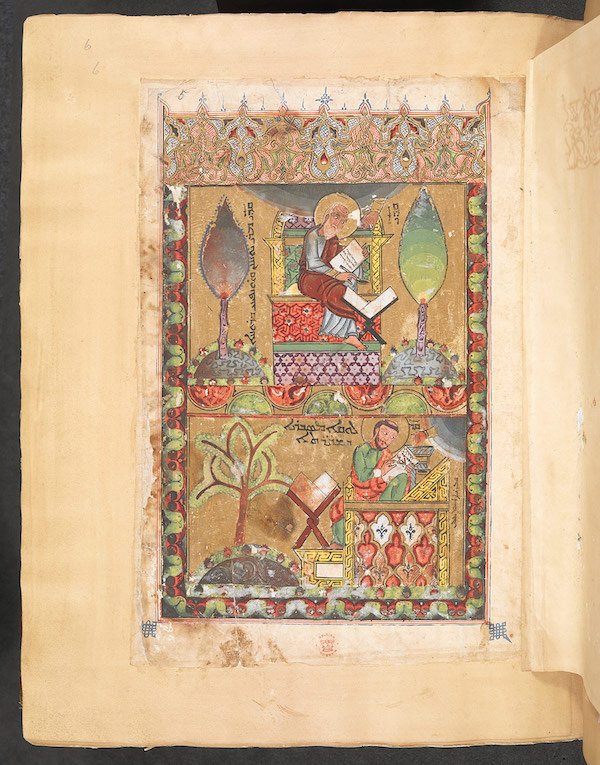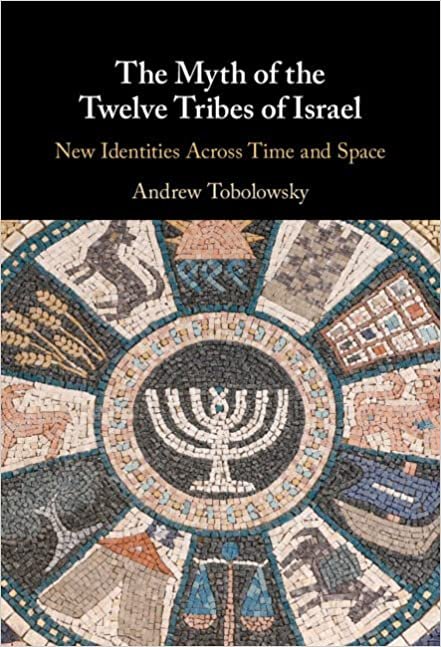“One of the chief hurdles in the consideration of the psalms found in 1QHᵃ as compositions that may have been read aloud in communal settings is the use of the term “liturgical” to characterize such settings and texts.”
Read MoreJonah and Prayer
“Prophecy and prayer, performance, composition of scriptures and their interpretation were all intertwined in vital and vibrant ways... The two prayers in Jonah offer illustrations of two of the many patterns of how prayer might intersect with scriptural tradition.”
Read MorePreaching Christology in the Roman Near East
Preaching Christology in the Roman Near East makes a significant contribution to both Syriac studies and late ancient studies.
Read MoreBook Note | Two Gods in Heaven: Jewish Concepts of God in Antiquity
In fact, binitarianism is even found in a number of late antique rabbinic texts as well, ultimately signaling that binitarian ideas did not necessarily serve as a form of proto-trinitarianism, remaining a part of Jewish thought even after the founding of Christianity.
Read MoreClass and Power in Roman Palestine: The Socioeconomic Setting of Judaism and Christian Origins
Anthony Keddie joins this rising movement of scholars interacting with class in a serious way, and his Class and Power in Roman Palestine: The Socioeconomic Setting of Judaism and Christian Origins stands as a welcome addition to recent provocative publications.
Read MoreDissertation Spotlight | Marshall Cunningham
I argue that the construction of Judeanness — like all collective identities — was a complex, contextual, and continuous process of identity formation that was undertaken, consciously or unconsciously, by individuals and communities throughout the Babylonian and Persian empires.
Read MorePharisees and Evangelical Preaching
Jesus and Nicodemus by Crijn Hendricksz, 1616–1645
Jesus and Nicodemus by Crijn Hendricksz, 1616–1645
“Evangelical Christian faith and Jewish faith, with all their nuances and varieties, have every right to dialogue, debate, and disagreement, but when criticism of the Pharisees crosses the line into maligning persons with whom we differ we need to raise a flag of denunciation.”
Read MorePharisees Part Two: Reception History
Parable of the Pharisees and the Tax-Collector, from Das Plenarium, print, Hans Schäufelein (MET, 61.663.364)
Parable of the Pharisees and the Tax-Collector, from Das Plenarium, print, Hans Schäufelein (MET, 61.663.364)
“My comments intend to address primarily those who have not yet read the book, to provide a brief taste of my assigned chapters, and to reflect on the significance of this work for Jewish-Christian relations, especially in terms of community engagement and education.”
Read MoreWho Needs the Pharisees? New Testament and Beyond
“Christ and a Pharisee,” early 17th century by Anthony van Dyck at the Met.
“Christ and a Pharisee,” early 17th century by Anthony van Dyck at the Met.
“Who needs the Pharisees?” – it seems that, on the whole, we today, both Jews and Christians, need them more than anyone has ever done before, but for very different reasons. And we need them in academic historical, non-polemical form.
Read MorePharisees Part One: Historical Reconstruction
“Christ and the Pharisees” by Lawrence W. Ladd ca. 1880. Smithsonian American Art Museum
“Christ and the Pharisees” by Lawrence W. Ladd ca. 1880. Smithsonian American Art Museum
“This literary image of Pharisees has been conflated with Jews generally and been attributed to real people in the here and now of all centuries over and over again. The narratives have been read historically, as accurately real life people – with all the horrific consequences emanating from this equation.”
Read MoreThe Pharisees: a SBL 2021 Review Forum
“The Pharisees includes historical studies that range from archaeology and etymological investigation to contributions that take up the Pharisees in association with Dead Sea Scrolls, 1 Maccabees, Josephus, selections from the New Testament, and rabbinic literature.”
Read MoreResponse to the Respondents
Roman Funerary Relief from Nijmegen, showing a school scene. Courtesy of Wikimedia Commons.
Roman Funerary Relief from Nijmegen, showing a school scene. Courtesy of Wikimedia Commons.
The study of fragmented remains of manuscripts shows how an approach will always be in need of adjustment when we use it on new and different materials. Both my study and the studies that documentary papyrologists do, start with the material remains. However, in my study of the Syriac manuscripts, I have had access to whole codices, even some medieval bindings, to colophons and notes, to churches that still stand, and to monasteries that are still active.
Read MoreCelebrating the Remedy of Neglect: a review of Liv Ingeborg Lied, Invisible Manuscripts: Textual Scholarship and the Survival of 2 Baruch.
Syriac Gospel Lectionary, British Library Add MS 7170
Syriac Gospel Lectionary, British Library Add MS 7170
“But if we wished to correlate other embodiments of this work, whether whole or partial, in Bible manuscripts, lectionaries, and catenae, in order to approximate the richness of Lied’s study of the embodiments of 2 Baruch—even if we were to confine ourselves just to the Syriac versions of Isaiah—we would quickly find ourselves swimming in deep waters, with a veritable tidal wave of varied manuscripts and possible contexts of use piling up and threatening to overwhelm us.”
Read MoreIs That All There Is?: On Limits in the Study of Second Temple Literature
“Enoch and Elias” British Library Royal 6 E IX f. 2v
“Enoch and Elias” British Library Royal 6 E IX f. 2v
“What if, as is suggested by Lied, 2 Baruch is not so easily traced to the earliest centuries CE, on account of its far later and Christian manuscripts?”
Read MoreOther People’s Hands: A Response to Lied’s Invisible Manuscripts
Saint Catherine's Monastery
Saint Catherine's Monastery
“This distinctively theological Christian supersessionism is just one iteration of a larger historiographical structure: one that involves claims to be the legitimate ‘heirs’ and best caretakers of a tradition, alongside the grudging and anxious awareness that the survival or access to that past is dependent on ‘someone else.’”
Read MoreWhat Can Manuscripts Tell Us about the Texts They Preserve? A Response to Liv Ingeborg Lied’s Invisible Manuscripts
leaf of the Codex Ambrosianus B. Codex Ambrosianus S. 45 super
leaf of the Codex Ambrosianus B. Codex Ambrosianus S. 45 super
“It is not only useful but, indeed, methodologically imperative to distinguish between 2 Baruch, a Jewish composition of the late first century CE, and its Syriac translation as preserved in the Ambrosianus.”
Read MoreLied's Invisible Manuscripts: a Review Forum
“It provides a new, critical look at the traditional academic narrative of this writing. And, it offers a critical and constructive engagement with approaches to textual scholarship in the field, paving the way for a provenance aware material philology.”
Read MorePublication Preview | The Myth of the Twelve Tribes of Israel
There were, in the ancient world and even into the medieval, those who claimed descent from the heroes of the Trojan War, and there have always been those who connected their genealogies to Noah’s Ark. I feel, however, very confident in saying that no identity in the history of the world has been assumed so often, in so many places, and for so long a time as Israel.
Read MoreRetrospective | Timothy Lim
The books that were eventually included in the canon share “family resemblances” with other books left out of the canon. For instance, just as the same eye colour can be found in people belonging to unrelated families, so too the story of Israel is evident in canonical and non-canonical books.
Read MorePublication | Desire in Paul's Undisputed Epistles
My study of “desire” (epithymeō, ho epithymētēs, epithymia, hereafter “desire”) in the Roman Empire arose because of the lack – at least as far as I am aware – of a single thesis or book examining the use of these lexemes within the Greek literature of the early Roman Empire.
Read More






